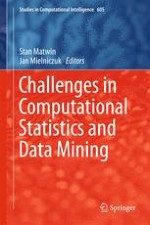2016 | OriginalPaper | Chapter
ADX Algorithm for Supervised Classification
Author : Michał Dramiński
Published in: Challenges in Computational Statistics and Data Mining
Publisher: Springer International Publishing
Activate our intelligent search to find suitable subject content or patents.
Select sections of text to find matching patents with Artificial Intelligence. powered by
Select sections of text to find additional relevant content using AI-assisted search. powered by
